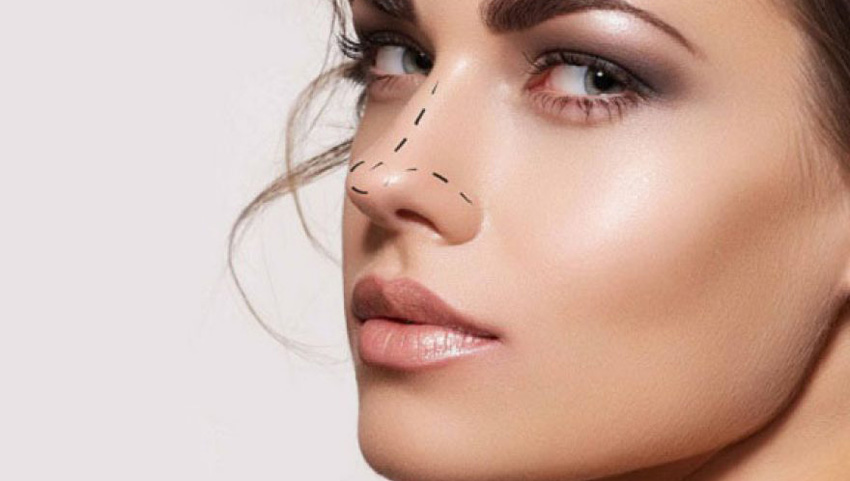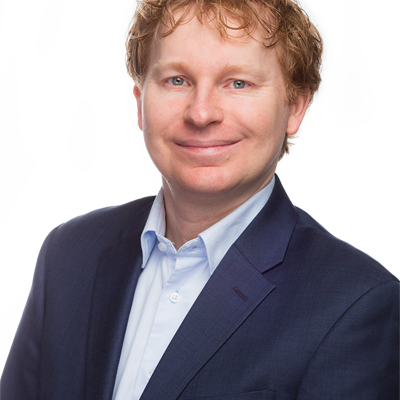A rhinoplasty is a surgical procedure aiming to redefine the shape and contour of the nose.
It can be done for functional reasons (e.g., nasal obstruction, deviated septum), corrective reasons (deformity, bump), or simply to improve the appearance of the nose by subtly altering its size and shape.
A rhinoplasty can increase or decrease the size of a nose, or alter its contour by changing its width and profile. This procedure can also correct asymmetry, straighten the nose if significantly deviated, alter the shape of the tip of the nose, or eliminate a bump.
Whether your motivation is aesthetic or reconstructive, a rhinoplasty can help you achieve balanced proportions in your nose and therefore your face.

What are the different rhinoplasty techniques?
1) Open rhinoplasty
In this technique, an incision is made in the strip of skin between the nostrils, at the base of the nose. With this approach, the surgeon can get a clear view of the nose’s internal structures, including cartilage, bone and the walls of the nasal cavity. This technique is frequently used during major corrective rhinoplasties and revision (or secondary) rhinoplasties. The shape of the nose is altered by filing down or surgically cutting (osteotomy) the bones of the nose.
2) Revision rhinoplasty
A revision, or secondary, rhinoplasty aims to further improve (if necessary) the appearance of the nose following an initial rhinoplasty. Patients turn to revision surgery when they are not entirely satisfied with the function and appearance of their nose, when they are still having some difficulty breathing, if the overall result is too subtle or dramatic, if they present residual asymmetry, or if the internal scarring causes rippling on the nose.
A revision rhinoplasty is much more complex than a primary rhinoplasty and is associated with much greater risks of complications. We recommend waiting at least one year after your first rhinoplasty before considering revision surgery, so as to give your nose the time to fully heal and achieve its final shape.
Frequently asked questions
A rhinoplasty lasts approximately two and a half hours. However, you must plan some time for preparation before entering the operating room (30 to 45 minutes) and time to recover from the general anesthesia (1 to 3 hours). You should therefore plan to take a day off from work for your surgery.
Swelling and bruising are normal in the days following a rhinoplasty, and may take weeks to dissipate. You may also have black eyes.
In order to protect your new nose, you should avoid wearing glasses for the first two weeks following the procedure. Do not be alarmed by any initial asymmetry or irregularities, as they should get back to normal as you heal. Sleeping with your head propped up some pillows helps the liquid drain out. Edema (swelling) and discolouration should reduce significantly in the first two weeks following the surgery. However, it may take up to one year for your nose to achieve its final shape.
You must avoid any intense physical exercise or contact sports during the first three weeks following your surgery in order to give your body a chance to heal comfortably. You can resume your normal physical activities four to six weeks after your surgery, but be very careful not to injure your nose.
Infection
Despite the use of standard preventive measures and antiseptic techniques, there remains a slight chance of infection at the surgery site. An infection could cause redness, pain, heat or swelling on your face. It may also cause a fever of 38.5oC or more. We recommend that you contact us immediately if you notice any of these symptoms, so that we may perform the appropriate tests and administer any necessary treatments.
Hematoma
During your surgery, we are careful to cauterize the blood vessels, so as to minimize blood loss. It is normal for there to be traces of blood in your dressings. Bleeding rarely continues beyond the surgery and in few cases, a hematoma (accumulation of blood) may form in your face.
If you experience significant and disproportionate pain in your face within 24 to 48 hours after your surgery, of if your face seems to swell, contact us so that we may reexamine you prior to your follow-up appointment.
The ideal patient for this procedure is in good general health, physically fit and has realistic expectations regarding the possible outcomes of the surgery.
Patients must be at least 14 years of age (i.e., the age at which their face stops growing) to be eligible for this procedure. This surgery may not be suitable for you if you smoke or have complex health issues for which you are currently being treated. Furthermore, this procedure is not performed on patients who have unrealistic expectations or are not psychologically prepared for surgery.
Although your surgeon will control the osteotomies performed during a rhinoplasty, there will always be a slight variation in the shape of the bone fragments created. Such imperfections are barely visible and do not affect the final outcome of the rhinoplasty. However, you must understand that, even in the hands of the most experienced surgeon, you may present slight asymmetry. In such a case, a minor touch-up (e.g., filing an uneven surface) may be necessary.
The final cost of your treatments will be calculated on an individual basis in accordance with your needs. The cost of a rhinoplasty generally varies between $9,220 and $13,300. For correction of the tip of the nose only, the cost is $6,245. However, additional charges may apply if the patient has a particular condition or if different surgeries are combined.
Our specialist

PLASTIC AND AESTHETIC SURGEON
Dr. Mario Luc
- 450-241-6045
Cosmetic surgeries
Make an appointment with a surgeon
Call Us
We would be glad to help you through the process by answering all your questions and allaying your concerns.